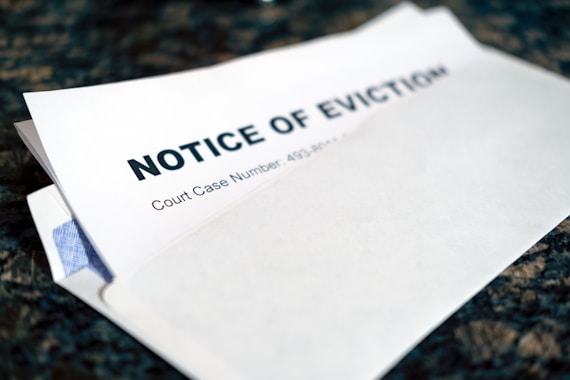


Tenant Background Screening Online Reports
See the full insights behind a prospective applicant with complete renter background reports. LeaseRunner integrates Experian® credit data, eviction history, and detailed tenant background checks into one streamlined dashboard, supporting landlords to uncover the full applicant profile and make leasing decisions you can trust.
What's Coverred?
Get Complete Tenant Insights with
All-Inclusive Screening Reports
Instantly access comprehensive tenant background checks with everything a landlord needs to rent confidently.
Landlords get a full suite of tools for renter screening online—criminal background and income verification, credit
reports, eviction records, and beyond—designed to help simplify the overall tenant screening process.
Eviction Check
Avoid costly risks with a nationwide eviction check. LeaseRunner searches 36M+ records and court filings across the country to flag prior eviction history, helping landlords protect properties and reduce vacancy cycles.
Credit Report
See beyond a tenant’s application, know their true financial stability. LeaseRunner combines Experian® credit data, VantageScore® 3.0, and a tenant risk model to reveal payment history, creditworthiness, and long-term reliability.
Income Verification & Cash Flow Report
Verify more than pay stubs—confirm steady income, employment verification, and cash flow consistency to ensure tenants can comfortably cover monthly rent.
LeaseRunner Dashboards
One
Dashboard,
Complete View of Tenant Profile
A unified and secure tenant screening
dashboard for all your rental decisions. Order, track, and review Experian®
credit,
eviction, and background reports—without handling sensitive data.
Nationwide Search for Peace of Mind
Our criminal
background check runs a nationwide search across 50+
states and county
court records for information on:
Applicant’s description and offenses
Criminal records cover probation/parole, watch lists, inmate
records,
etc.
Property damage claims, unlawful detainers,...

Identify Prior Landlord-Tenant Disputes
Avoid costly disputes
with LeaseRunner’s eviction report. Look into the
applicant’s eviction
history, including:
Applicant information
Eviction case(s) information & judgements
Property damage claims, unlawful detainers,...
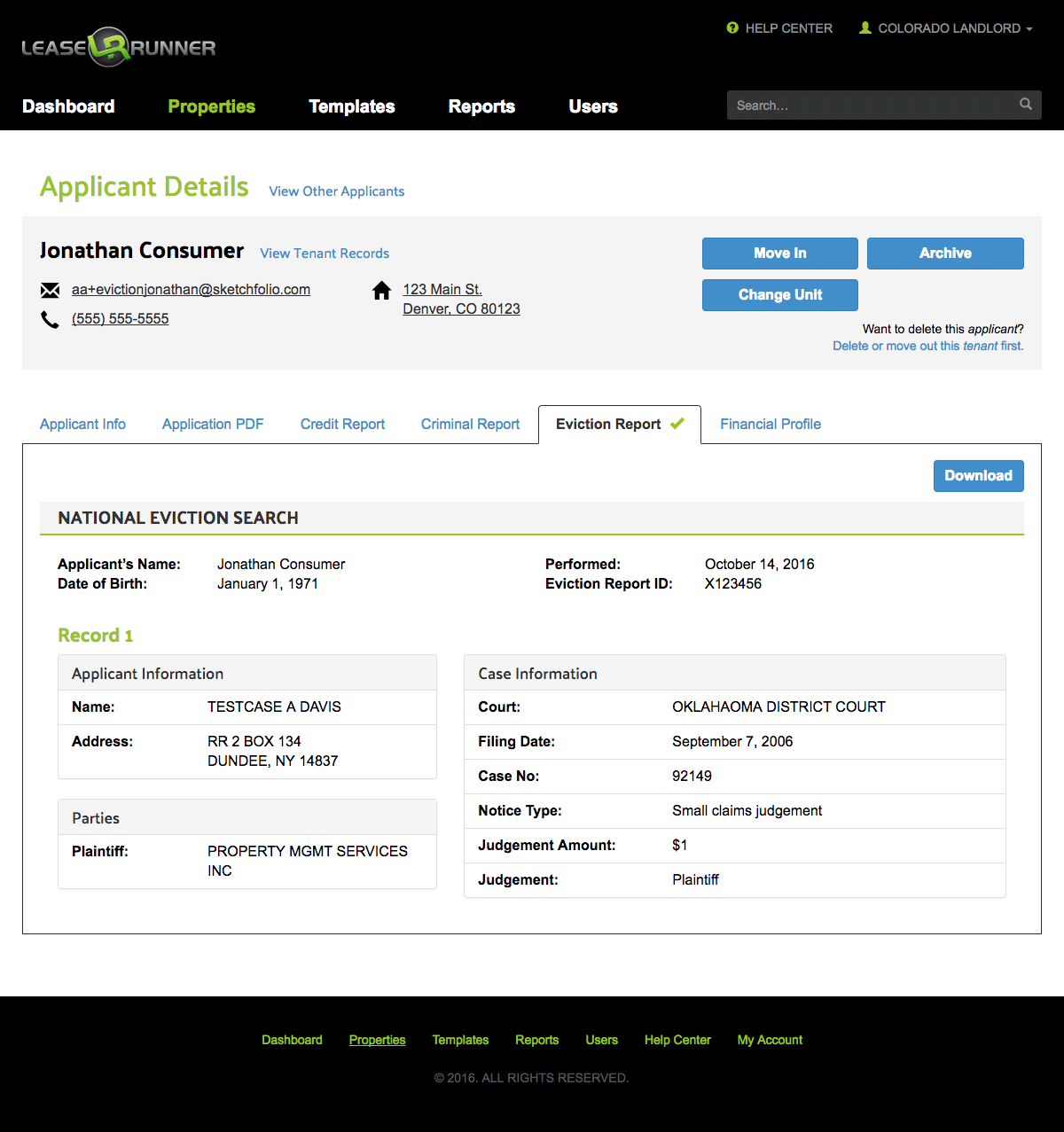
A Deep Look at Financial History
Instantly assess a
prospective tenant's ability to manage rental
payments. With Experian as
our credit bureau, we design a
comprehensive credit report, including:
VantageScore evaluation
LeaseRunner’s tenant risk screening model (New!)
Applicant’s credit summary
Public records, inquiries, and tradelines

Check the Applicant's Ability to Pay
Not only credit data,
LeaseRunner gives landlords clear financial
insights to confirm whether
applicants meet income requirements. This
optional report includes:
Bank transactional detail
Documented income sources
Financial overview (cash trends, balance, deposits vs. withdrawal
graphs)

Credit Report Sample

Want to edit and create a customized form? Download now to get started!
Criminal Report Sample

Want to edit and create a customized form? Download now to get started!
Income & Cash Flow Verification Sample

Want to edit and create a customized form? Download now to get started!
Eviction Report Sample

Want to edit and create a customized form? Download now to get started!
Tenant Screening Process
Screen a Tenant in Four Simple Steps
Screen tenants in 4 simple steps:
start from your dashboard, send the request online, and receive the report
instantly—no
printing or mailing needed.
Request a Screening
Create an account with LeaseRunner. From your LeaseRunner dashboard, generate the screening request by selecting the reports you want (credit, criminal, eviction, income verification, or rental application) and decide who covers the fee.
Invite Applicant
With one click, easily invite the applicant by sending a secure email link, or sharing your custom application URL. Applicants don’t order themselves; they use only the secure link you provide.
Applicant Verifies
The applicant uses the secure link to complete the rental application and provide required screening information. Payment is processed automatically—either by the applicant or the landlord, depending on your setup.
Get The Report Right Away
Once authorization and payment are complete, reports are sent to your dashboard within minutes. You’ll receive credit, criminal, eviction, income, and rental application results in one place. If no credit history exists, the credit report is skipped, the fee is adjusted, and you’re notified.
Benefits
Instant Tenant Screening Reports
with Direct-Source National
Records
Trust your decisions, and let our data back you up. LeaseRunner’s renter screening online tools make the
process
easier, faster, and more secure than ever. Perfect for landlords and property owners who
want confidence and
control in every lease.
See Verified Detail of Tenant’s Background
No more waiting for reports or tracking down info
by info. LeaseRunner gives
landlords one centralized dashboard with immediate access to
Experian® credit,
national eviction history databases, and criminal records.
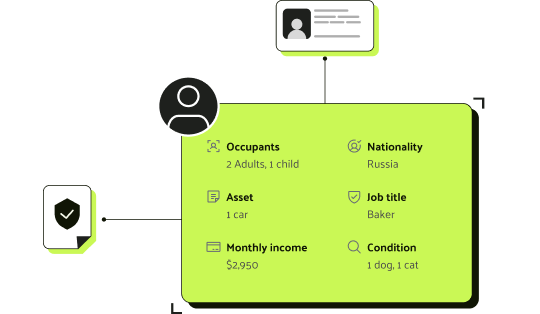
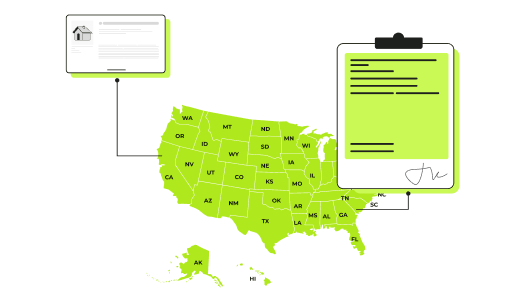
Tailored to Local Laws By Default
Our solutions automatically adjust to local regulations and preferences (including admissible records and eviction laws), ensuring your leasing process is legally compliant by default.
Skip Setup Delays
Skip the tedious setup and messy paperwork. Go from sign-up to first screening in under 10 minutes. Send applications, screen tenants, and sign leases, all online with no physical paperwork required.


Control Who Pays for Screening Reports
Gain full financial flexibility without sacrificing time. Control who covers the report cost (applicant or landlord) while guaranteeing results are delivered right away.
Verify Identity Across Multiple Points
Stop application fraud before it starts. LeaseRunner uses advanced, multi-point verification across financial and public records to guarantee the identity of every applicant on every submission.
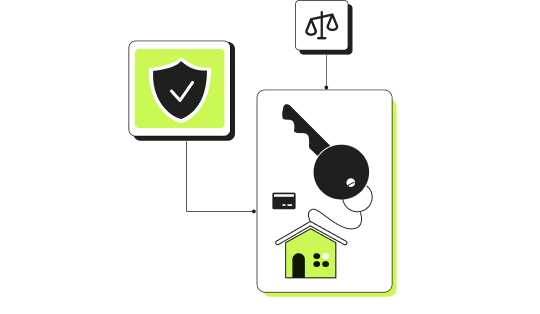
Built for Professionals
Tenant Screening Solutions for
Real Estate
Professionals
Purpose-built tools that give
landlords, property managers, and tenants the clarity and confidence to move faster
in
every rental decision.
Landlords
LeaseRunner equips self-managing landlords with an all-in-one dashboard to centralize tenant applications, screening reports, and payments without the need for expensive or complex software.
Property Managers
Portfolio-ready tools that streamline bulk applicant invitations, standardized criteria, and automated verifications—allowing property managers to scale efficiently, stay compliant, and focus on long-term portfolio growth.
Tenants
For tenants, LeaseRunner offers a transparent screening experience with exclusive PTSR. Securely submit information at a landlord’s request, track progress in real time, and share your PTSR with multiple landlords—all while knowing your data is protected by strict standards.
Portable Tenant Screening Report (PTSR)
One Report. Unlimited Applications. Save on Extra Fees.
For tenants across the U.S, more states are now open to accepting reusable tenant screening reports. With LeaseRunner, you’re ahead of the curve. Order your PTSR online in minutes, share it instantly, save on fees, and increase your approval chances.
One report, multiple uses
Buy once, share indefinitely in 30 days. Tenants purchase their screening report just one time and can share it with any landlord, eliminating the need for repeated payments.
Trusted compliance
Gain landlord trust immediately. Landlords receive a professional, FCRA-compliant report that meets legal standards, giving them the confidence to rely on your data.
Faster apply, faster approval
Skip the line and the duplicates. Eliminate time-consuming administrative delays to speed up approvals and cut unnecessary application costs.
Save on application fees
One-time payment is all you need. You pay a single fee for the report and never pay extra to resubmit the same information. Maximize your savings on your rental search.
Our Offerings
Pricing Plans
Pay-as-you-go and decide who covers the fees, with complete transparency in pricing.
Basic Screening
$17/per applicant
*Paid by applicant or landlord.
Pro Screening
$40/per applicant
*Paid by applicant or landlord.
Ultimate Screening
$54/per applicant
*Paid by applicant or landlord.
Most popular
Premium Screening
$64/per applicant
*Paid by applicant or landlord.
Criminal Background Records
Custom URL and Applications
State-Compliant Data
Address History
Identity Verification
Full Credit Report
VantageScore 3.0
Eviction Records
Nationwide Eviction Database
Judgment Amount Details
Income Verification & Cash Flow Report
Payroll Deposits
Income & Expense Summary
Bank Account Balance


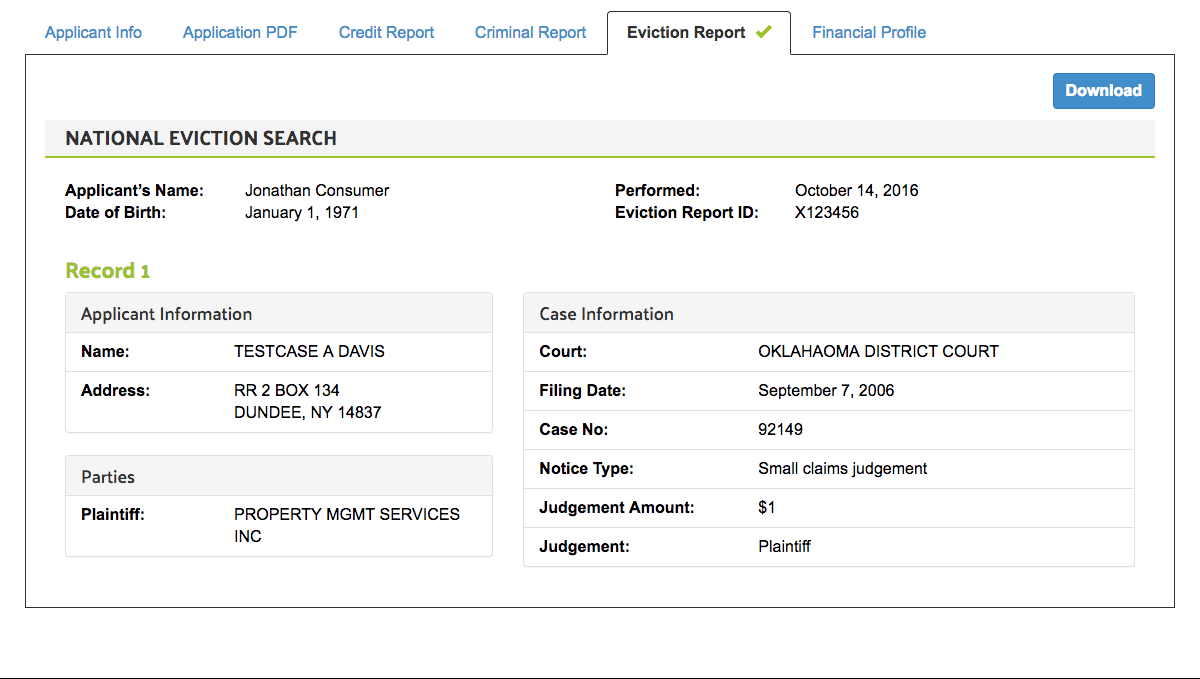

About LeaseRunner
Built By Landlords,
For Landlords Nationwide
Created by landlords who understand your challenges, LeaseRunner streamlines tenant screening into
a flexible, secure, and unified solution—so you save time, cut risks, and make smarter leasing
decisions.

Best Tenant Screening Flexibility
Customize your tenant screenings with LeaseRunner’s flexible options. Order only the reports you need (credit, eviction, criminal, or income) and easily bundle them for a complete, tailored screening package.
Mobile-Optimized Applications
More than 60% of renters complete applications on their phone.. LeaseRunner is built for mobile, so applicants can securely apply, verify identity, and submit documents anytime, anywhere, helping landlords and agents fill vacancies faster.
Data Security Assurance
LeaseRunner keeps sensitive information safe with encrypted systems and FCRA-compliant standards. Applicants enter their own Social Security and financial data, so landlords never touch private information, reducing liability risks.
Simple, Effective, No Monthly Fees
With LeaseRunner, the payment options are flexible. You can pay per report or pay for your own bundle. On average, landlords can save $500+ per year compared to subscriptions, while still accessing professional, instant tenant screening services.

Awards & Recognitions
Recognitions That Speak Volumes
From industry innovation awards to nationwide adoption, LeaseRunner is trusted by thousands of landlords,
property professionals, and organizations across the country.


10,000+
Trusted by landlords across over 10,000 ZIP codes nationwide.

50+
Providing seamless leasing solutions in all 50 states.
500,000+
Serving over 500,000 clients and growing every day.
Testimonials
Over 12 Years of Trust and Success
Discover More Features
FAQs
Frequently Asked Questions
A tenant screening report provides essential information to evaluate a prospective tenant's background history and rental responsibilities, including credit scores, criminal background checks, payroll verification, and eviction records. LeaseRunner offers comprehensive, all-inclusive reports in one platform that helps landlords make informed, data-driven leasing decisions with ease.
No, tenant screening does not impact a tenant's credit score. At LeaseRunner, we use soft credit inquiries, which allow us to gather the necessary data without affecting your applicants' credit standing, ensuring a smooth screening process.
LeaseRunner offers affordable and transparent pricing for tenant screening. We offer both tenant screening packages and separated reports, depend on your preferences, with À la Carte options including:
- Credit Report: $23
- Eviction Report: $14
- Criminal Background Check: $17
- Payroll Verification & Cash Flow Report: $10
For a complete listing of Tenant Screening Packages, visit LeaseRunner Pricing.
Most LeaseRunner tenant screening results are delivered immediately through your dashboard. Comprehensive reports, including credit, criminal, and eviction history, are available in real-time. Only specific, advanced verifications like payroll or bank cash flow analysis may require a brief delay, which depends on the applicant's response time.
Yes, applicants can pay for their own screening directly with LeaseRunner. This feature saves the landlord time and money by eliminating fees and the need to handle sensitive financial details. The process is entirely secure and applicant-paid for full transparency.
Absolutely, LeaseRunner tenant screening is 100% FCRA compliant. We strictly follow the Fair Credit Reporting Act (FCRA) guidelines, ensuring that all reports—including credit and background checks—are accurate, secure, and legally reliable for making housing decisions.
LeaseRunner stands out by offering direct-source Experian® data and a flexible pay-per-use model with zero setup fees or monthly subscriptions. We differentiate ourselves with unique reports like Payroll Verification and Cash Flow Analysis, giving landlords deeper, unparalleled insight into a tenant's financial reliability that competitors often lack.
Insights
